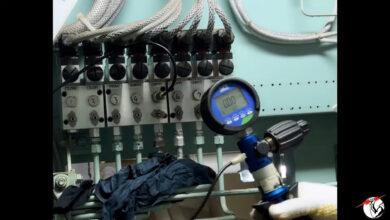5-Minute Diesel Test: Is Your MAN B&W Suction Valve Leak-Proof?
How to Conduct Operational Checks for MAN B&W Fuel Pump Suction Valve
Oh, the thrill of testing a MAN B&W fuel pump suction valve! If you’ve ever thought, “Hey, I’d love to spend my day pouring diesel oil into things and waiting for five minutes,” well, today’s your lucky day. Let’s dive into this riveting process and turn those five minutes of waiting into something magical. 🎉
Introduction: The Edge-of-Your-Seat Excitement
Welcome to the glamorous world of marine engineering, where you’ll learn the jaw-dropping, heart-pounding technique of checking a suction valve for leaks. Sure, it sounds like watching paint dry, but let’s pretend it’s the highlight of your engineering career.
Step 1: Gather Your Arsenal
Before you embark on this adrenaline-pumping task, grab these essentials:
- Diesel Oil: Because what’s better than a substance that smells like hard work and regret?
- The Suction Valve: Preferably one you’ve just overhauled.
- A Timer: Your phone works, but a good ol’ stopwatch makes you look cooler.
Step 2: The Art of Diesel Pouring
- Locate the Valve: That round, metallic piece of glory you’ve been tinkering with all day.
- Pour Diesel Oil: Fill the chamber with diesel oil. Precision isn’t necessary—this isn’t latte art.
- Pro Tip: Try not to spill diesel everywhere unless you enjoy explaining the mess to your boss.
- Start the Timer: Set it for exactly five minutes. Not four. Not six. Five.
Now sit back, relax, and contemplate your life choices while the diesel sits there doing… absolutely nothing.
Step 3: The Big Reveal
After five long minutes of waiting (arguably the most thrilling part), it’s time to inspect your masterpiece:
- Shift the Valve: Gently move it to a clean spot.
- Check for Spills: Peer underneath like Sherlock Holmes investigating a mystery.
- If there’s no spill: Congratulations! Your suction valve is tighter than a submarine hatch.
- If there’s a leak: Time to reopen the valve and do it all over again. (And yes, try not to cry.)
Common Mistakes to Avoid
- Skipping the Wait Time: “What could go wrong if I check after 30 seconds?” Oh, just an inaccurate test and hours of rework. Enjoy.
- Ignoring Spills: If you think, “Eh, it’s just a tiny leak, no big deal,” then buckle up for some major engine drama later.
- Using Water Instead of Diesel Oil: Unless you’re testing for aquatic compatibility, stick to the manual.
Conclusion: The Joy of Completion
And there you have it! A job well done, assuming your valve passed the test. If it didn’t, well, you’ve just found your afternoon activity: doing it all over again! Remember, marine engineering isn’t about perfection—it’s about perfecting the art of pretending you know what you’re doing. 😉
Got questions? Drop them in the comments! Someone will probably answer (eventually). Until next time, happy valve testing, and may your diesel never leak. 🚢✨






